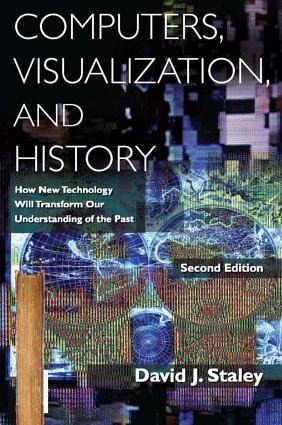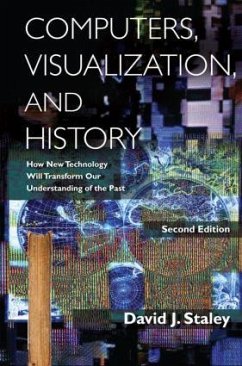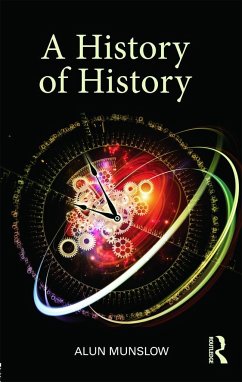
Computers, Visualization, and History
How New Technology Will Transform Our Understanding of the Past
Versandkostenfrei!
Versandfertig in 1-2 Wochen
59,99 €
inkl. MwSt.
Weitere Ausgaben:

PAYBACK Punkte
30 °P sammeln!
This visionary and thoroughly accessible book examines how digital environments and virtual reality have altered the ways historians think and communicate ideas and how the new language of visualisation transforms our understanding of the past. Drawing on familiar graphic models--maps, flow charts, museum displays, films--the author shows how images can often convey ideas and information more efficiently and accurately than words. With emerging digital technology, these images will become more sophisticated, manipulable, and multidimensional, and provide historians with new tools and environments to construct historical narratives. Moving beyond the traditional book based on linear narrative, digital scholarship based on visualisation and hypertext will offer multiple perspectives, dimensions, and experiences that transform the ways historians work and people imagine and learn about history. The second edition features expanded coverage of both "the historiography of images," and of sequential narratives, 2- and 3-D visual syntax, historically themed video games, Second Life, and the "serious games" movement. The author includes a new appendix, "Guidelines for Visual Composition in History," that provides a set of guidelines and standards for history and social studies teachers who wish to use technology for student assignments. Also new to the second edition is a web link feature that will greatly enhance the visualisation within the text. Electronic users can simply click and promptly bring the visuals to them.
This visionary and thoroughly accessible book examines how digital environments and virtual reality have altered the ways historians think and communicate ideas and how the new language of visualization transforms our understanding of the past. Drawing on familiar graphic models--maps, flow charts, museum displays, films--the author shows how images can often convey ideas and information more efficiently and accurately than words. With emerging digital technology, these images will become more sophisticated, manipulable, and multidimensional, and provide historians with new tools and environments to construct historical narratives. Moving beyond the traditional book based on linear narrative, digital scholarship based on visualization and hypertext will offer multiple perspectives, dimensions, and experiences that transform the ways historians work and people imagine and learn about history. This second edition of Computers, Visualization, and History features expanded coverage of such topics as sequential narratives, 3-D modeling, simulation, and video games, as well as our theoretical understanding of space and immersive experience. The author has also added "Guidelines for Visual Composition in History" for history and social studies teachers who wish to use technology for student assignments. Also new to the second edition is a web link feature that users of the digital edition can use to enhance visualization within the text.














